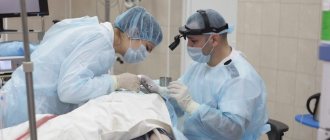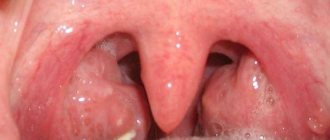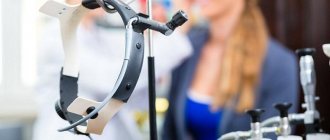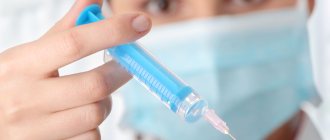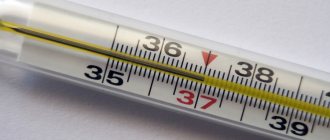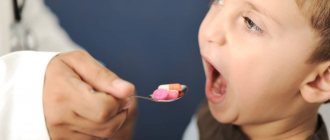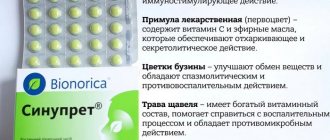Radio wave removal of adenoids in the nose - the essence of the method?
The radio wave method of adenotomy is carried out in stationary conditions using a special device - Surgitron. As a result of the intervention, the nasopharyngeal tonsil is excised with a nozzle from which radio waves emanate .
- Thanks to the use of this method, during the operation it is possible to minimize blood loss due to the simultaneous coagulation of blood vessels.
- This type of surgery is performed under general or local anesthesia. The first type of anesthesia is mainly used for young children, and the second for older patients.
- Before radio wave adenotomy, the child undergoes the necessary medical examination, since the operation has some contraindications.
What are adenoids?
Adenoids are a pathological change in the state of the lymphoid tissues that make up the palatine, tubal, lingual and pharyngeal tonsils.
Hyperplasia is one of the key causes of dysfunction of the pharyngeal tonsil, which takes part in the formation of local and general immunity. A decrease in local immunity leads to the development of infectious diseases, which are often complicated by otitis media.
The pharyngeal tonsil is located in the vault of the pharynx, so its enlargement leads to a narrowing of the lumen in the airways. Inflammatory processes in the lymphoid tissues cause swelling of the oropharyngeal mucosa, which provokes difficulty in nasal breathing. As a rule, adenoid vegetations occur in children aged 4 to 15 years. Untimely excision of the hypertrophied tonsil can cause deformation of the child’s facial skull, which is associated with constant breathing through the mouth.
Indications and contraindications for removal
The development of adenoids is a rather dangerous condition, and if it is neglected, severe complications can arise that affect the ear canal, immune status, general well-being, and a chronic focus of infections can form. Therefore, timely treatment is simply mandatory.
The doctor prescribes radio wave adenotomy in the following cases:
- Decreased hearing acuity.
- Frequent viral diseases (flu, acute respiratory viral infections, acute respiratory infections).
- Chronic otitis with constant relapses and severe course.
- Difficulty in nasal breathing.
- Lack of therapeutic effect from medications.
- Pathological processes affecting the upper respiratory tract (pharyngitis, tracheitis, laryngitis, bronchitis).
- Violation of the development of the facial skeleton and malocclusion due to the formation of adenoids.
Contraindications to radio wave adenotomy are:
- Oncological diseases in a child.
- Carrying out preventive vaccination, after which less than a month has passed.
- Young age - up to 3 years.
- Serious bleeding disorders.
- Severe congenital deformation of the facial skeleton.
Laser reduction of adenoids
In our clinic, in the treatment of stage II and III adenoiditis, we recommend laser reduction of adenoids - an alternative method of surgical treatment to classical adenoid removal.
Adenoid reduction is an incomplete removal of lymphoid tissue, which allows you to restore nasal breathing and improve drainage of the sinuses of the nose and ear, leaving intact the healthy tissue of the adenoid vegetations, which will perform the physiological functions assigned to it by nature in the formation of immunity.
This method is often mistakenly called laser removal of adenoids; however, complete removal of lymphoid tissue in this case does not occur, because by reduction doctors only mean a significant reduction in its volume.
Preparing for surgery
The preparatory stage is considered very important for any surgical intervention, as it helps the doctor assess the state of health and the possibility of carrying out this procedure.
With radio wave adenotomy, the child must undergo the following medical tests:
- General blood and urine analysis.
- Coagulogram.
- Blood test for HIV, syphilis, hepatitis.
- ECG.
- A joint examination of the child by a pediatrician and an otolaryngologist, after which doctors determine the possibility of surgery.
As for food, you should refrain from eating the evening before the intended adenotomy.
The last time you are allowed to eat is no later than 18:00. In the morning you can neither eat nor drink.
Indications for adenotomy
Adenotomy is a surgical operation involving partial or complete excision of the hyperplastic pharyngeal tonsil. In otolaryngology, there are more than 5 different methods for removing lymphoid formations, but laser reduction is one of the safest and least traumatic. Laser treatment of adenoids in children is carried out only in cases of extreme necessity, since the tonsils play an important role in the formation of immune defense.
Direct indications for adenotomy are:
frequent relapses of infectious diseases, complicated by otitis media; regular bouts of snoring, accompanied by holding your breath during sleep; insufficient physical and mental development caused by hypoxia (oxygen starvation); adenoid vegetations almost completely block the airways; deviations in the development of the facial skull associated with constant opening of the mouth.
Untimely removal of a hypertrophied tonsil can cause enuresis, asthma, seizures and neuroses.
At the initial stage of development of the pathology, you can get by with conservative treatment, involving the use of anti-inflammatory and decongestant drugs, physiotherapy, etc. And only if drug treatment is ineffective, the doctor may prescribe surgical removal of the adenoids.
Progress of removal of adenoids by radio waves
After all the tests and permission for surgery, the doctor sets a specific day. From the evening until adenotomy you need to follow a diet.
Radio wave adenotomy using the Surgitron device
The procedure is characterized by the following actions of the otolaryngologist:
- The child is given anesthesia and waits until it takes effect.
- Afterwards, using the Surgitron apparatus, the adenoid tissue is removed using radio waves.
- After the operation, the child is transferred from the operating room to the general ward and his well-being is monitored.
The radio wave method of excision of pathological growth of the tonsils is considered the most effective and is determined by minimal relapses.
Complications, as a rule, are also not observed, because this method of operation is considered bloodless and promotes simultaneous blood clotting.
How does laser reduction work?
During the operation, the doctor, using a low-power laser, literally evaporates a thin layer of inflamed tissue, immediately soldering the small capillaries that nourish the tissue. There is a decrease in the volume of the organ in size, which will become even more significant when the postoperative swelling subsides - literally a few hours after the procedure.
The laser treatment itself lasts no more than 15 minutes and is carried out on an outpatient basis under local anesthesia. The operation is carried out through the nasal passages in a gentle, low-traumatic way, practically painless and bloodless.
After laser reduction of the adenoids, the child continues to lead a normal life.
The following restrictions are recommended after surgery:
- reduce active physical activity for 1 week
- ban on visiting the swimming pool, bathhouse, sauna for 2 weeks
To monitor the effectiveness of the operation, you just need to see the doctor the day after the operation and follow the schedule of subsequent visits.
Postoperative care - what is possible and what is not allowed after surgery?
To speed up tissue healing after radio wave adenotomy, it is necessary to strictly follow medical recommendations.
Often after surgery there may be painful sensations, so to relieve them it is allowed to use analgesics, but only after a doctor’s prescription.
Since the nasopharyngeal tonsil was an important organ and was responsible for preventing infections and strengthening the immune system, after its removal you can often notice an increase in temperature. To normalize the condition, it is recommended to drink more fluids and use medications. However, among medications it is worth excluding acetylsalicylic acid, which thins the blood and can cause bleeding.
As prescribed by a medical specialist, vasoconstrictor nasal drops are used, which help reduce postoperative swelling and significantly improve breathing.
During the rehabilitation period, important attention should also be paid to nutrition. At this time, it is advisable to exclude hot, hard, salty, spicy and fatty foods. Drinking, vegetables, fruits and mushy, liquid dishes are beneficial.
For 3 weeks you must refrain from:
- Visits to school or kindergarten.
- Excessive physical activity, including swimming, running.
- You cannot take a hot bath or go to the sauna.
- Do not sunbathe in direct sunlight.
A month after radio wave adenotomy, the child should rest more, gain strength and be in the fresh air.
How the procedure is performed
It is necessary to rinse the nasal cavity to wash away mucus and secretions from the surface of the pharyngeal tonsil. You can rinse your nose using a regular saline spray or, for example, using the “fluid movement along the Proyets” method, popularly called “cuckoo”.
Laser therapy is a painless procedure that does not require specific anesthesia or immobilization of the child. The only difficulty is that during treatment the child must sit as still as possible.
After anemization (vasoconstrictor drops are instilled into the child’s nose or the mucous membrane is lubricated with an adrenaline solution), a light guide is inserted into the common nasal passage. For laser therapy, a helium-neon or argon laser is used. The doctor determines the duration of the procedure and the number of sessions depending on the age of the child.
After the session you must:
- limit physical activity;
- do not visit baths, saunas, swimming pools;
- follow a gentle diet: do not eat hot or cold food; carbonated drinks; spicy, salty and sweet foods. It is not advisable to give your child dry foods such as chips or cookies.
The average cost of the procedure in Russia is 500-1500 rubles per session.
List of addresses of the best clinical centers for pediatric laser surgery
Caring parents will always be concerned about the question of how to successfully and reliably solve the problem of carrying out such an operation (if they have in their hands a final written direction for the treatment of their child). Where can you remove adenoids with a laser for a baby, if we consider the central regions of Russia. Because in rural, regional areas, or in children's hospitals, it is unlikely that such laser equipment will be available.
Please note that the children's departments of all clinics and hospitals accept arriving children after prior registration and a consultation examination. Applications must be submitted in advance by telephone. Then clarify all the organizational issues of interest - payment for the entire treatment period, hospitalization with or without the mother, whether all the tests are available (does it need to be done here, again).
- In Moscow, this is “SM-Clinic Center”;
- In St. Petersburg, since 1930, he has been conducting unique ENT operations - the Research Institute of ENT, its “Children’s Surgical Clinic”;
- In Rostov-on-Don - the Clinical Center for Pediatric Otolaryngology “Family”;
- In Krasnoyarsk, Terve Medical Center won excellent reviews;
- In Novosibirsk, it successfully operates on the basis of the latest innovative developments in ENT surgery.
Articles on the topic How to treat adenoids in a child of the 3rd year of life?
Finding out where children's adenoids are removed with a laser today does not seem to be a difficult or insurmountable obstacle. The main thing is that parents set themselves, indeed, the vital and most important goal in their lives - to ensure a healthy and happy childhood for their children, without adenoid enlargements!
Contraindications for laser therapy
The main contraindications are related to the general well-being of a person or the presence of certain diseases. Treatment cannot be carried out in the following cases:
- high body temperature;
- any stages of anemia;
- blood diseases;
- benign and malignant formations;
- hyperthyroidism;
- pathologies and problems in the functioning of the cardiovascular system;
- tuberculosis and other infectious diseases.
If there is at least one contraindication from the above list, laser physiotherapy is contraindicated.
Excursion about laser: types of laser equipment, their distinctive properties
This, indeed, without any exaggeration, is an excellent treatment option - laser for adenoids . Designers and manufacturers of medical equipment have created laryngitis equipment that operates on the basic principle of laser irradiation of nasal and tonsillar tonsils (adenoids and palatine tonsils) affected by adenoid invasion.
According to technical parameters and radiation characteristics, laser devices are classified into 2 types:
- First type: These are low-frequency lasers (generators) - producing laser pulses (in a weak register) for valorization (light evaporation) of initial pathoadenoid tumors. For resistive flow, pulses of concentrated light beams (ultraviolet, red/infrared light) are used.
The method is used as a preventive measure, to prevent adenoid growths. But drying, as a drastic action designed to completely destroy pathogenic strains of microflora, is not effective.
- The second type is laser monochromatic emitters for a more potent effect on the adenoids (2.3 degrees of disease). They operate in high-frequency light radiation mode. This is called coagulation ( cauterization of adenoids with a laser ), or manipulation with a laser knife-adenotome. In addition to the high-frequency form of light coagulation, carbon dioxide (through a laser emitter) is widely used to reduce and compress pathogenic adenoid foci.
Related articles Homemade ointment for the treatment of nasal adenoiditis in children: honey-vaseline ointment
Taking into account these innovative universal capabilities of laser equipment, otolaryngologists use combinatorial impact programs:
- Preventative measure;
- Non-invasive monochromatic irradiation of adenoid patho-neoplasms (valorization/drying), or treatment with a carbon stream, seems to “iron, smoothes” the adenoids, expanding the nasal canals for nasal free breathing;
- Invasive format of ENT surgery (intraoperative sanitation, coagulation treatment of nasal vessels).
To explain clearly, the first on the list is a laser treatment technique, which involves a completely non-surgical effect. But, 2 other positions relate to surgical invasion, in a small or highly penetrating method of exposure.
PS (an important postscript to the types of lasers and the categories of small patients for whom they are suitable).
Laser prophylaxis is primarily recommended for weakened children (by nature with an innate perception of adenoviral intoxication):
- Effectively maintains the adenoids in the nose in normal parenchyma sizes;
- In especially, just beginning symptoms (nasal congestion, runny nose), treatment with laser irradiation is strongly attributed;
- If you follow a course of 10 days of laser valorization (using equipment of the 1st or 2nd type), a stable and long-lasting period of healing conservative therapy is achieved, without additional prescription of medicinal antibiotics, corticosteroids and antihistamines.
For children who have undergone a preliminary, refined program of “laboratory tests + instrumental endoscopic examinations”, and who are still confirmed to have a severe stage of adenoid growth in the nasal adenoids, they are definitely referred to laser adenotomy.
These children will undergo surgery to remove the adenoids with a type 2 laser. Laser adenotomy implies: an invasive OTO/ENT surgical technique with mandatory intraoperative sanitation, with coagulation of blood vessels in the surgical field.
